Aztec Garden Ideas: Transform Your Yard into a Lush Oasis
Exploring Aztec garden ideas can be a delightful way to connect with nature while celebrating ancient traditions. These gardens often blend elements of history, culture, and practical design to create lush and vibrant spaces. Whether you have a small patio or a large backyard, incorporating Aztec-inspired features can enhance your outdoor living area.
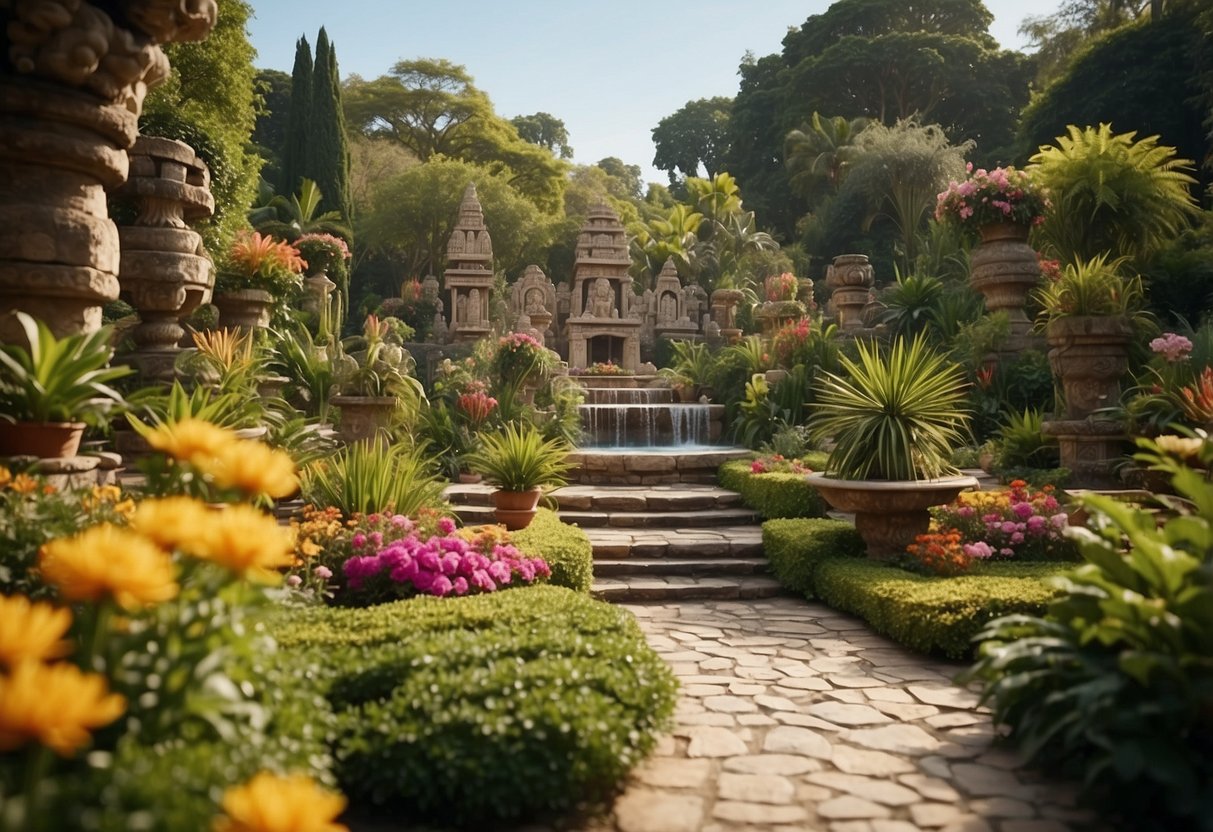
What makes Aztec gardens unique is their use of traditional methods and materials that have been passed down through generations. The rich history behind these techniques not only adds beauty to your garden but also provides a sense of cultural heritage. Embracing these ideas can transform your outdoor space into a thriving, historic oasis.
1) Tlaquepaque Pottery
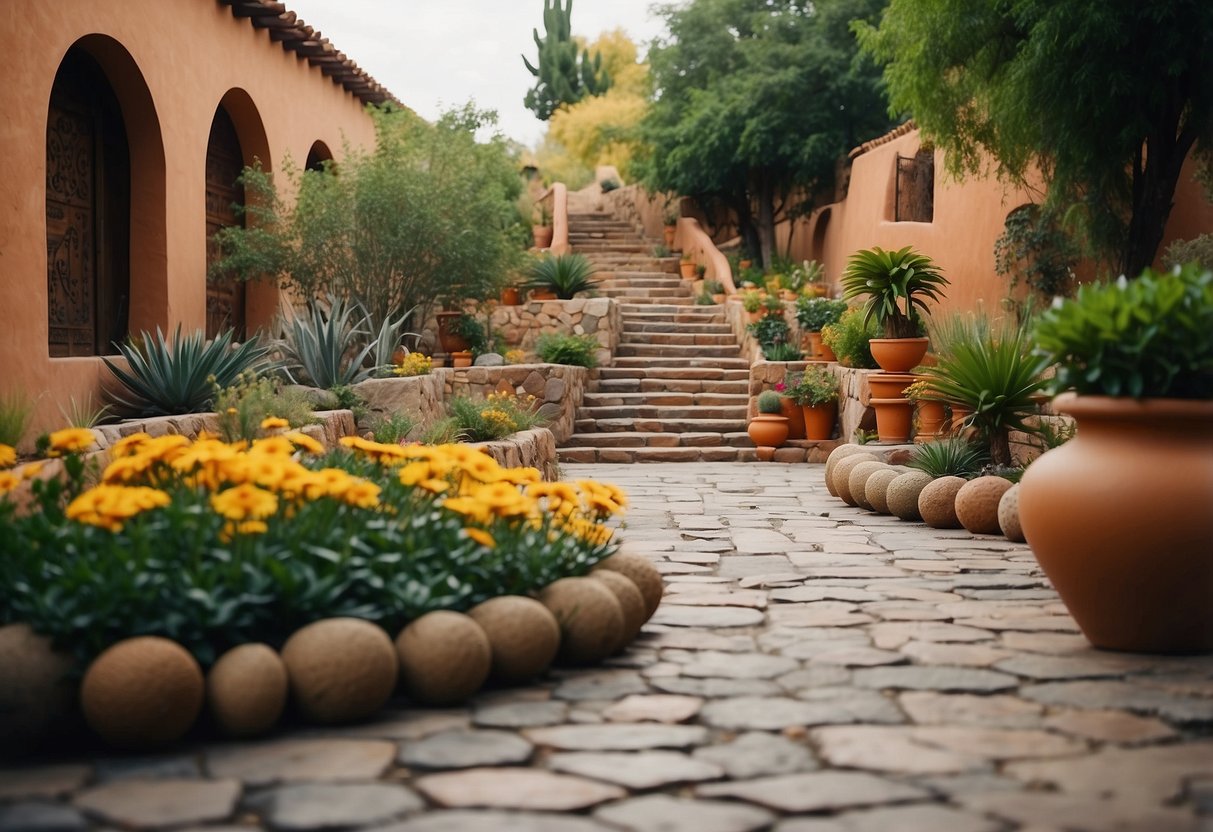
Tlaquepaque pottery adds vibrant color to your Aztec garden. This Mexican pottery style is known for its unique designs and glazing techniques.
You can find Tlaquepaque pottery in many shapes and sizes. Use pots, bowls, and figurines to enhance your garden’s look.
These pieces are often decorated with bold patterns and rich colors that reflect traditional Mexican art. Adding Tlaquepaque pottery creates a lively and authentic atmosphere in your garden.
2) Feathered Serpent Sculptures
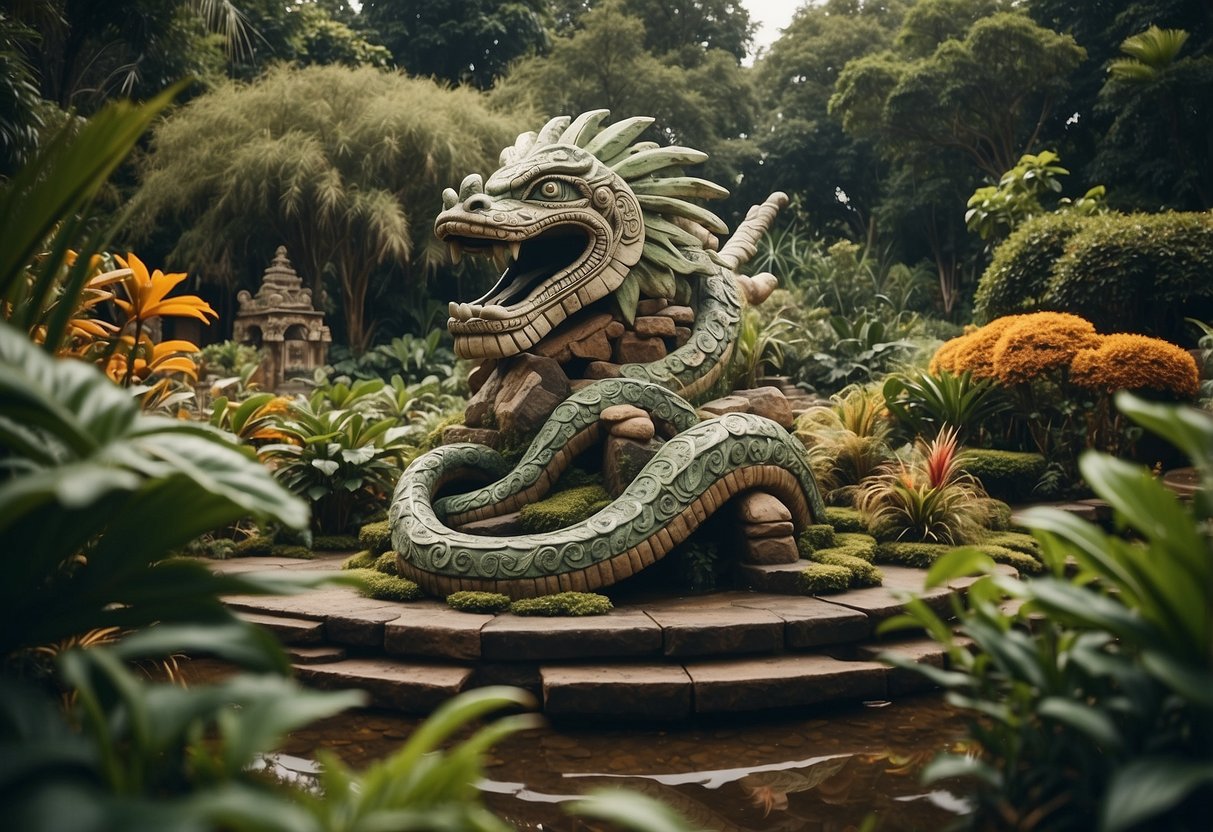
Incorporating Feathered Serpent sculptures into your Aztec garden adds a touch of history and mythology.
These sculptures can represent Quetzalcoatl, the Feathered Serpent god associated with creation and renewal.
Place these statues near pathways or garden entrances for a captivating focal point. You can find more information about the Feathered Serpent and its significance to inspire your design.
3) Copper Wind Chimes

Copper wind chimes add a charming touch to your Aztec garden. They create soothing sounds as they sway in the wind. The copper pipes can be cut into different lengths to produce various tones.
To make your own, you will need copper pipes, string, and a few basic tools. Hang them in a spot where the breeze can reach them. They will not only look great but also provide a relaxing ambiance.
For more ideas, you can explore beautiful copper wind chime designs on Pinterest.
4) Colorful Talavera Tiles

Adding colorful Talavera tiles can instantly brighten your garden. These tiles showcase vibrant patterns that reflect Mexican heritage.
You can use Talavera tiles as borders for garden beds or pathways. They also look great on outdoor furniture.
Talavera tiles are hand-painted, making each piece unique. This adds a personal touch to your garden space.
5) Agave Plants

Agave plants are a striking addition to any Aztec garden. They have bold, sculptural forms that capture attention. Their rosettes of thick, spiky leaves come in various shades of green and blue.
Pair agave with other desert plants like yucca or sedum for a low-maintenance garden. They thrive in dry climates and need little water, making them a practical choice for sustainable gardening.
To add color, consider incorporating drought-tolerant flowering plants like Red Hot Poker or Salvia. This combination creates a visually stunning and water-efficient garden.
Try different agave species to add diversity and interest to your landscape.
6) Handwoven Textiles
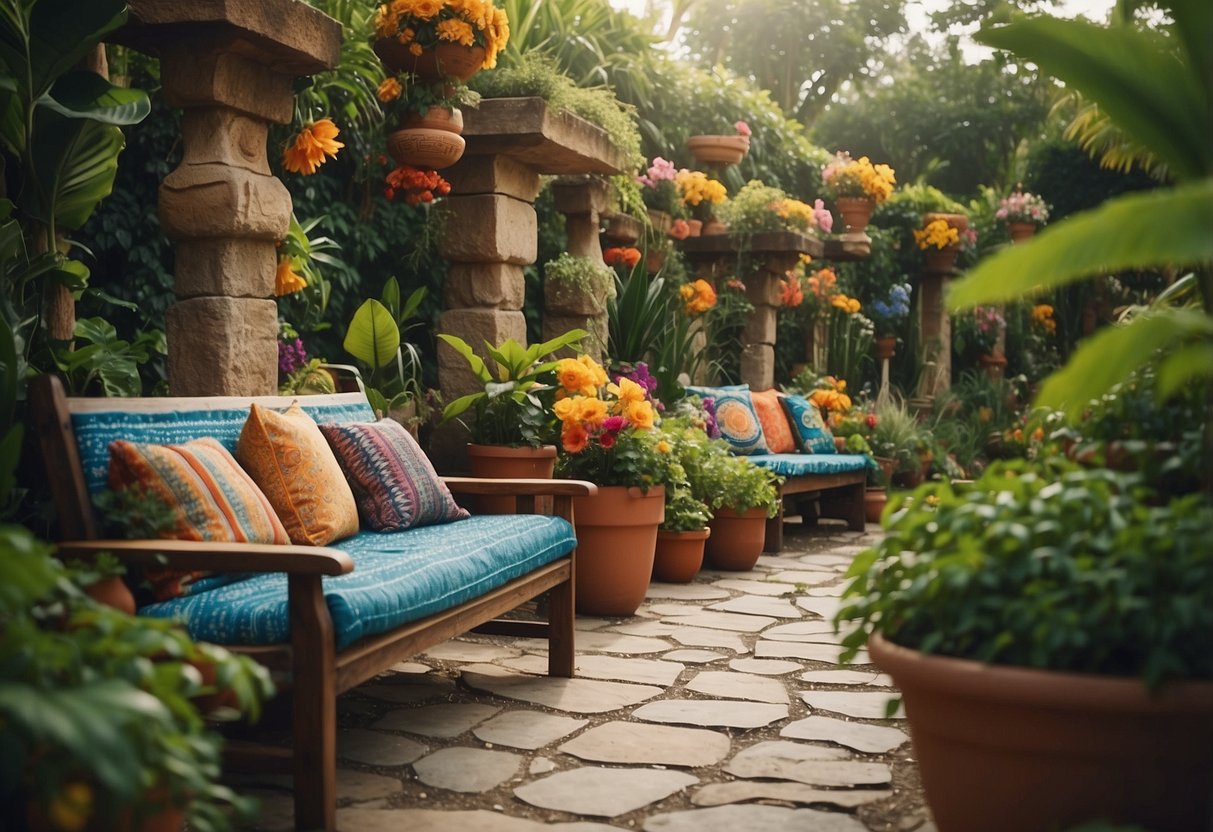
Adding handwoven textiles to your Aztec-themed garden brings color and history. You can use these beautiful fabrics as cushion covers, tablecloths, or even hammocks.
Aztec textiles often have intricate designs like diamonds and zig-zags. These patterns add visual interest and connect your garden to ancient traditions.
Look for fabrics made with traditional weaving techniques. They are usually lightweight and feature open weaves, perfect for outdoor settings. Explore different types of Aztec weaving to find the perfect match for your garden.
7) Cempasuchil Marigolds

Cempasuchil marigolds, also known as “flowers of the dead,” are a vibrant addition to your Aztec garden. These bright, fragrant blooms are central to Day of the Dead celebrations.
Marigolds have been used in these ceremonies for over 2000 years. Their bold colors and strong scent help guide spirits back to the living world.
Planting cempasuchil marigolds is simple. They prefer sunny spots and well-drained soil. Water them regularly to keep them blooming beautifully. Adding these flowers can bring a touch of Mexican heritage and tradition to your garden.
Learn more about the history of cempasuchil.
8) Stone Pathways
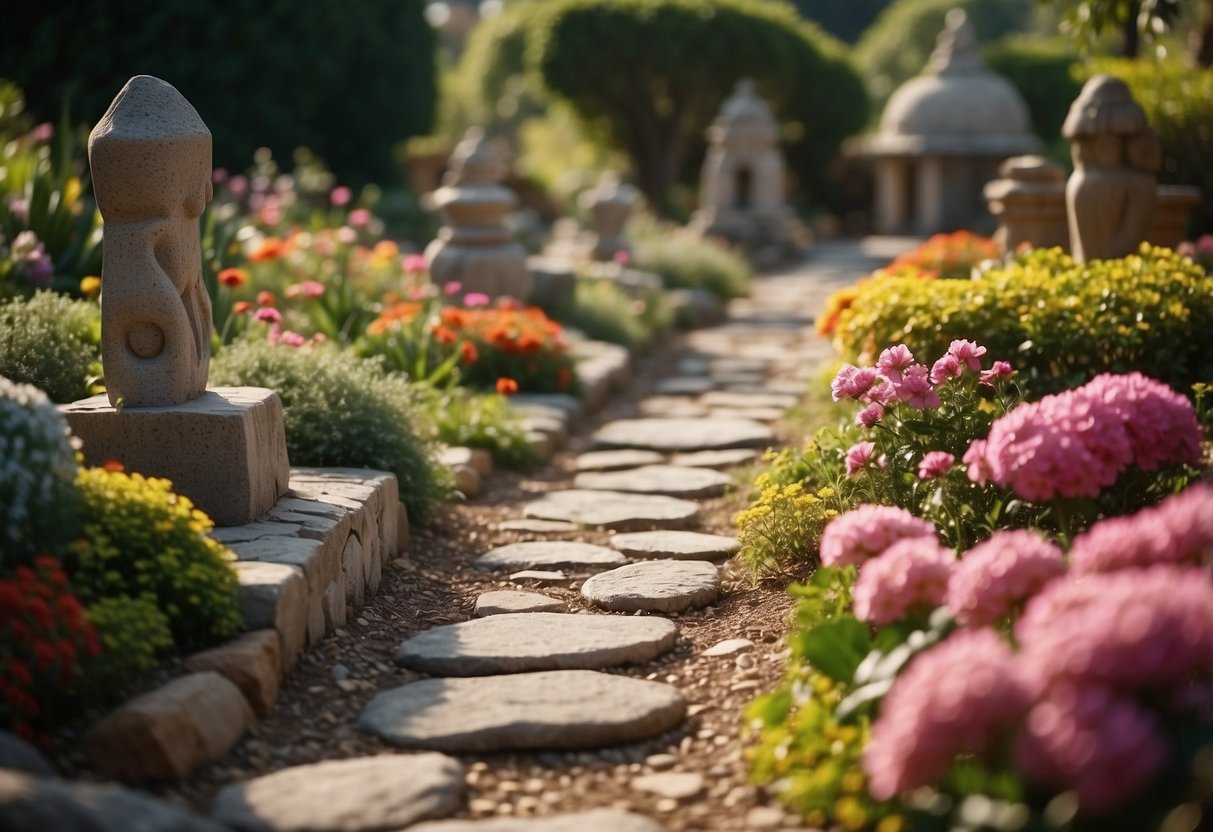
Stone pathways can add a charming touch to your Aztec garden. They guide visitors through lush greenery and vibrant flowers. You can use flagstones or pebbles.
For a natural look, fill the gaps between larger rocks with moss. Create patterns by using different shapes and sizes.
Consider lining the pathway with succulents or small plants. This will make your garden more visually appealing and inviting.
9) Mosaic Fire Pits

Adding a mosaic fire pit can bring color and charm to your Aztec garden. You’ll love how the tiny tiles create intricate patterns that catch the firelight.
You can choose bright colors to mimic traditional Aztec designs. This will make your garden unique and inviting.
Explore more mosaic fire pit ideas to get inspired!
10) Aztec Calendar Stones

You might think about using Aztec Calendar Stones for decoration in your garden. These stones are detailed and beautiful pieces of art that tell stories of the Aztec’s view of the universe.
The most famous one is the Sun Stone, also known as the Calendar Stone.
Imagine placing a replica in your garden, surrounded by native plants. This could create a unique focal point that sparks conversation and adds a historical touch to your space. It celebrates ancient culture while enhancing the natural beauty of your garden.
Understanding Aztec Gardens

Aztec gardens, known for their unique engineering and sustainable practices, have a rich history and distinct design features.
Historical Context
The Aztecs developed their famous floating gardens, or chinampas, around the 14th century in the Valley of Mexico. This area, now part of Mexico City, had shallow lakes like Xochimilco and Chalco that were perfect for creating these gardens.
The Aztecs started constructing their capital, Tenochtitlán, in the early 14th century near Lake Texcoco. To feed the growing population, they needed innovative agricultural solutions. Chinampas provided a way to farm in a challenging environment with limited arable land. These floating gardens were essential for sustaining the Aztec civilization and contributed significantly to their agricultural success.
Key Features
Chinampas were small, rectangular plots built on the shallow lake beds. They were made using a combination of reeds, stalks, and mud. These gardens appeared to float on the water, but they were anchored to the lake bed with willow trees planted around them.
Mulching was an important practice for the Aztecs. They used organic materials like straw and hay to retain moisture and suppress weeds, ensuring the soil remained rich and productive. This method also helped regulate soil temperature, critical for consistent plant growth.
The intricate system of canals between chinampas allowed for easy irrigation and transportation. By collecting soil from the lake bottom to build the gardens, the Aztecs ingeniously managed to create a self-sustaining agricultural system that provided for their entire population.
Incorporating Aztec Elements
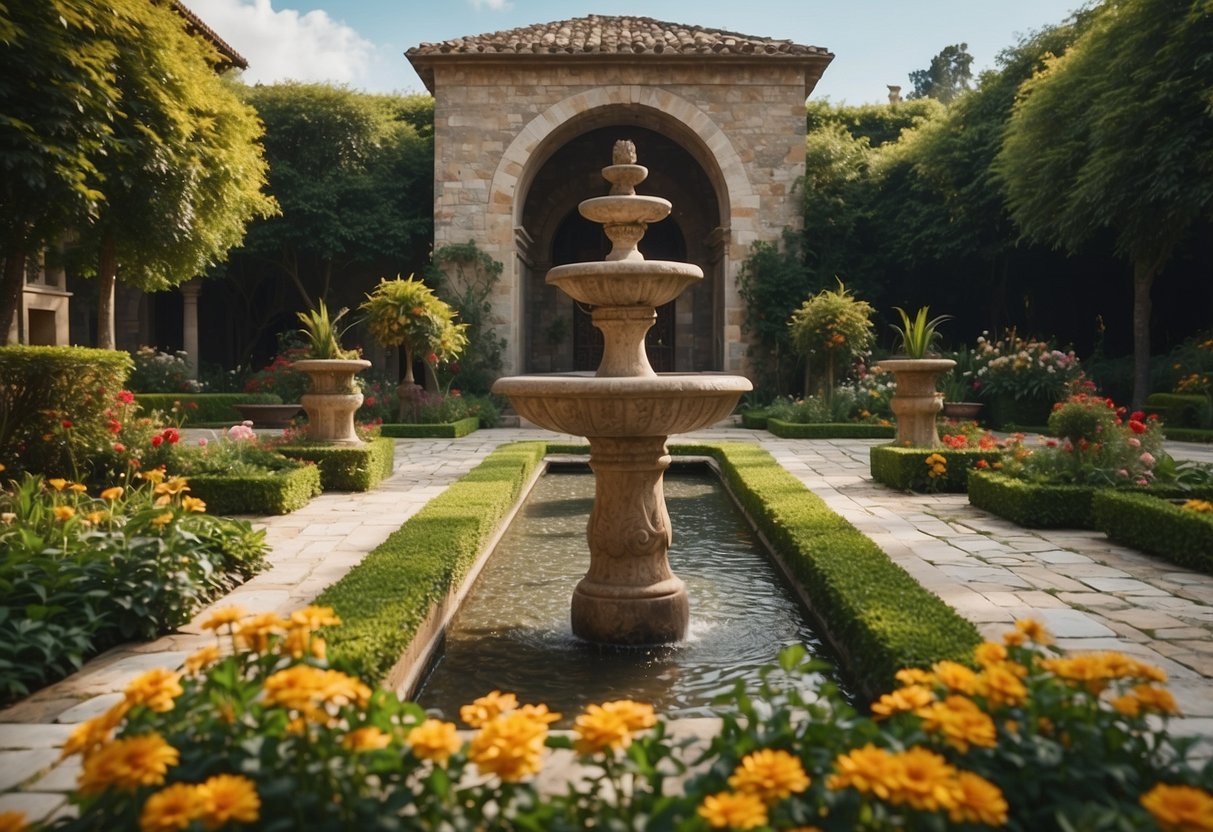
Bringing Aztec elements into your garden adds a unique and vibrant touch. Key aspects include using native plants and thoughtful hardscape design to mimic traditional Aztec settings.
Aztec Plants and Foliage
Start with native plants like cacti, succulents, and agave. These plants thrive in warm climates and need little water, making them perfect for a low-maintenance garden. You can also add flowering plants like marigolds and dahlias for a splash of color.
Terracotta pots are great for these plants. They not only look authentic but also help keep the soil dry. Arrange your pots in groups to create focal points in your garden.
Trees like the Mexican fan palm or jacaranda can provide shade and structure. These trees are not only beautiful but also pay homage to traditional Aztec landscapes.
Herbs such as cilantro and epazote can also be included. Besides adding greenery, they offer fresh ingredients for your kitchen.
Hardscape Design
Incorporate stone pathways and terraces to create different levels in your garden. Use materials like river rocks and gravel to mimic the natural feel of an Aztec retreat. These hardscape elements can also help in controlling soil erosion.
Water features such as small fountains or ponds can add to the atmosphere. The sound of trickling water is soothing and evokes the spiritual connection the Aztecs had with nature.
Add sculptures or carvings inspired by Aztec motifs. These can serve as focal points and add an artistic element to your garden. Look for items like stone statues, ceramic tiles, or metal art that features traditional Aztec patterns.
Don’t forget seating areas. Use rustic wooden benches or stone seating to create cozy spots where you can relax and enjoy your garden. Decorate these areas with brightly colored cushions for added comfort and style.
Make sure your lighting highlights the beauty of your garden at night. Use lanterns or solar lights placed along pathways and near focal points. This not only adds beauty but also improves safety.







